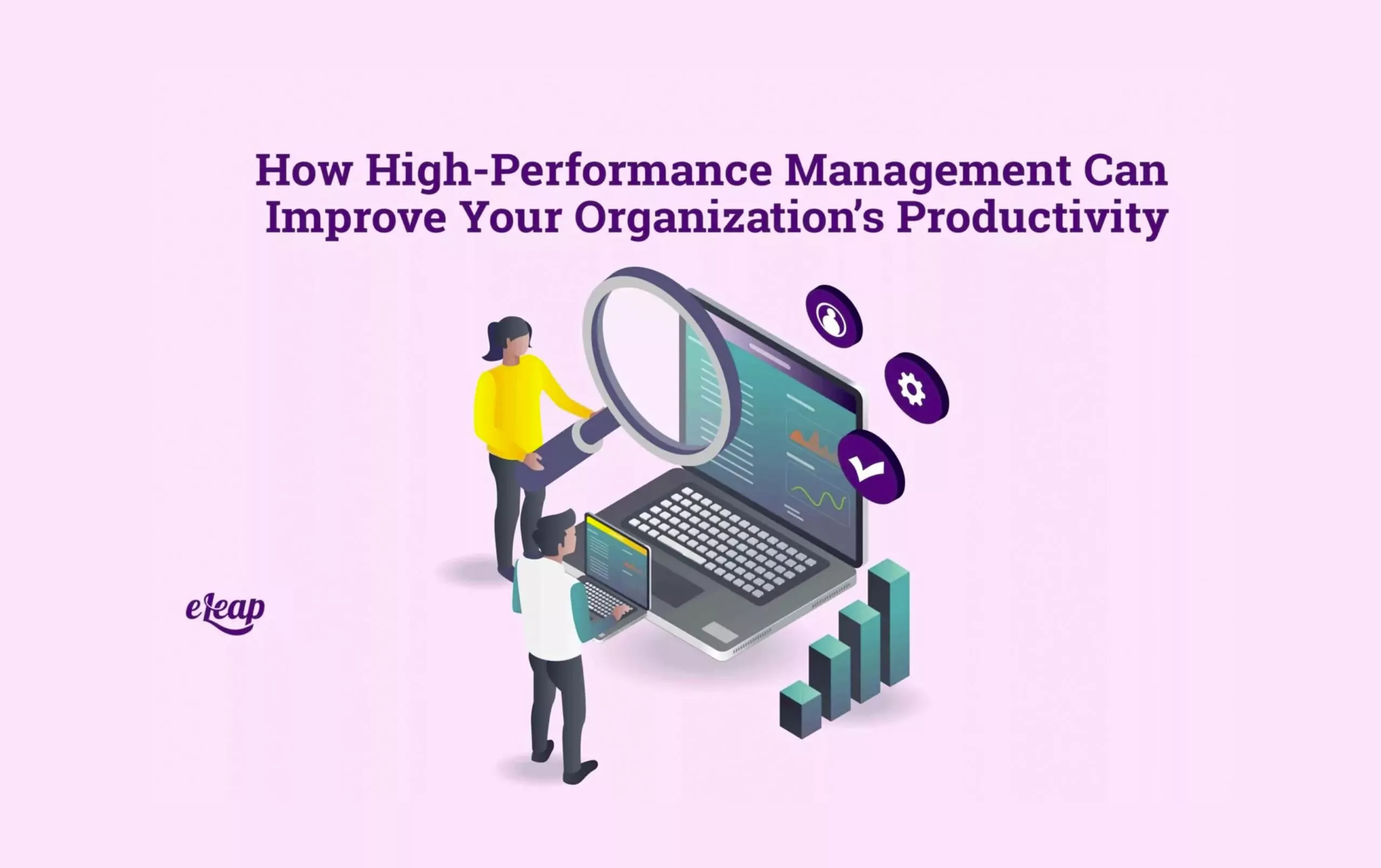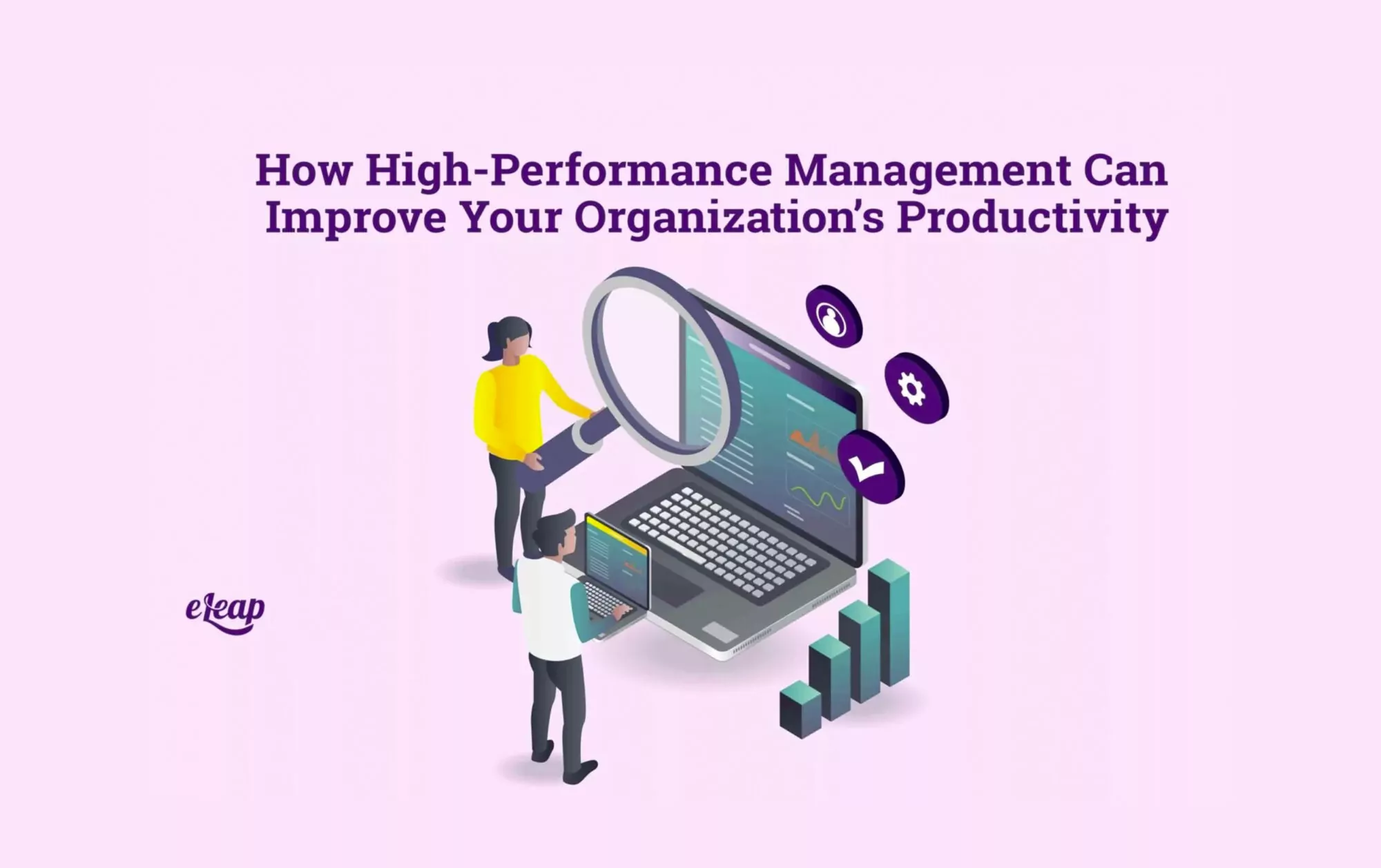How High-Performance Management Can Improve Your Organization’s Productivity

An organizational concept that drives the success of most businesses is called high-performance management. The backbone of any company is comprised of the people they employ. The key to any company’s success is its employees’ collective performance on the job. Many businesses are successful in the short term, but the longevity of that success is dependent on the ongoing development of an organization’s team. The eLeaP Performance Management Platform, which includes a continuous performance management system, provides organizations with powerful options to attract and retain high-caliber team members.

Just as industries adapt and change with market fluctuations, so must the organizations and the people within them. High-performance management is a means of ensuring employees are keeping up, not only with the status quo but also with the progression of their respective industries.
Micromanagement Does Not Equal High-Performance Management
High-performance management is not to be confused with micromanagement. Micromanagement is a term used for situations in which supervisors monitor their subordinates’ work tasks and productivity levels in an extreme or overbearing way. Micromanaged employees often feel as if their manager is “breathing down their neck,” not giving them enough physical or figurative space to effectively do their job. This creates a barrier to their productivity.
If employees are feeling micromanaged, it can have the opposite effect compared to good high-performance management. Team members who feel micromanaged will often develop resentment and defiance toward their superiors. They will experience diminished confidence and creativity, won’t feel empowered in their job role, and will be less productive and less successful.
Fed-up employees typically end up finding somewhere else to work. Altogether, this leads to high turnover, which can unravel the structure of an organization over time. This is due to the time and money spent hiring and training new employees, only for them to continue leaving. Micromanagement dooms an organization from the inside.
Finding a Middle Ground
On the other hand, if an organization’s employees are left to work completely alone, the business could also suffer for other reasons. They may not get enough direction, which could allow any confusion or questions to remain unresolved.
While most employers would like to believe they’ve hired the best, most driven employees – not everyone is made to work independently. Some employees could be prone to slacking off, which also creates a productivity block. Effective high-performance management is what bridges the gap between “too much” and “not enough” management.
How to Implement High-Performance Management
If high-performance management is the key to organizational success, how exactly does a manager put it into practice? The following are a few guidelines.
Clarify Expectations
Employees will perform better when they know their exact expectations. Vague instructions only create more premature frustration for employees left to fill in the blanks on their own. This could lead to a negative feedback loop of corrections and revisions that could have otherwise been avoided from the start.
Not only telling your employees what you want but also why you want it that way can help them relate more to their tasks. When employees find tasks relatable, they’ll take a more committed form of ownership and responsibility. They are more invested in its success. They’ll even find more fulfillment in seeing it through to completion.
Set Realistic, Specific, and Quantifiable Goals to Track as a Team
Every organization certainly has major goals to hit. Large goals need to be broken down into manageable milestones. This increases the likelihood of success. Teams should work together and establish defined goals that are attainable and trackable
For example, a business might have major goals to hit. Large goals need to be broken down into manageable milestones. This increases the likelihood of success. Teams should work together and establish defined goals that are attainable and trackable. Large annual goals broken down into monthly, weekly, or daily milestones make the finish line more foreseeable.
Teams can set specific goals such as:
-
Number of sales calls made to new clients
-
Number of dormant customer follow-up calls made for reorders
-
How many purchase follow-up calls were made for customer satisfaction
Small goals are realistic, specific, trackable, and communicated with the entire team, which makes them an effective component of high-performance management.
Normalize Constructive Feedback
Giving employees regular constructive feedback on their work performance helps them to always be aware of where they stand. Positive feedback is easy to give out when necessary, but negative feedback can be tricky to bring across constructively.
One strategy is to pair positive feedback with constructive criticism so that the employee gets a little ego boost from the positive evaluation This makes the negative feedback a bit more palatable. When negative feedback is given tactfully and as “constructive criticism,” it should leave an employee feeling motivated to improve instead of frustrated.
Be Open to Receiving Feedback as a Manager or Team Leader
Feedback can also be shared from support team members to managers as well. The best leaders are open to receiving constructive criticism, even from their subordinates. It can also help managers to get a feel for the overall employee experience of their team, which is important to understand and leverage to improve morale and teamwork.
Employee Recognition
Another big component of high-performance management is how much employees are made to feel appreciated for their hard work. One way to demonstrate appreciation is through recognition. Employees feel more validated in their roles when they receive recognition in front of their peers or even to the public. It serves as a clear communication that they are doing good work.
Recognition shouldn’t be reserved for just the above-and-beyond efforts of team members, though those instances are the worthiest of a shout-out. Sometimes even the employees who do good work consistently deserve some sort of gesture that reminds them they’re appreciated. Maybe they bring a unique sense of humor into the work dynamic, and it wouldn’t be the same without them there. A simple hand-written note expressing that they’re a valued team member can be an affirming gesture that they will appreciate.
One way to encourage recognition within an organization’s team is to hang an appreciation board in a common space. This will function as a place where employees can write appreciation notes to each other for everyone on the team to see. If an employee feels that the actions or insight of a coworker helped them in some way, they can tell them so by writing them a personal note and hanging it on the board. It’s a fun way for everyone to show each other some appreciation and can be a big morale booster.
Invest in Employee Skill Development
Continuing education for employees can help them expand on existing skills or even pick up a few new tricks to add to their skill set. Periodic training refreshers can give people a renewed enthusiasm for their job as well as confidence in their abilities to perform the duties required of them.
There are many forms of continuing education, such as webinars, workshops, formal classes, and even internal training options such as cross-training or peer coaching.
Employee skill development makes high-performance management easier by helping them be more confident in their work.
Continuing education helps your team keep up with new skills and changes in the industry. it gives them an advantage over competitors who don’t take advantage of those opportunities.
High-Performance Management – A Game-Changer When Implemented Correctly
All businesses rely on the performance of their employees to reach success. When team members feel micromanaged by their supervisors, it can cause the team to unravel over time.
When employees receive clear expectations, constructive feedback, attainable goals, and recognition for their hard work, they will feel more fulfilled. This lays the foundation for team productivity and, ultimately, helps motivate each team member to continue to perform. Management teams can only benefit from these effective high-performance management techniques that are sure to set any organization up for success.